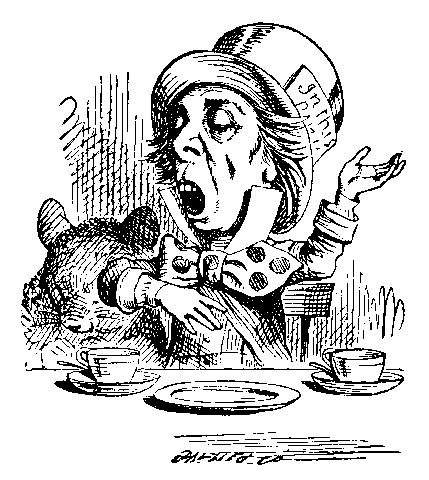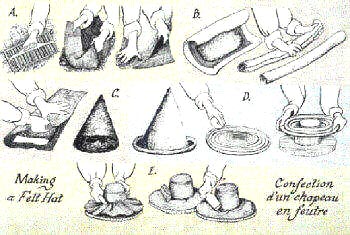
 The prime beaver fur with which to make
felted beaver hats comes from beaver
trapped in the winter months. Beaver fur consists of two types of hair, the coarse outer guard hair and
the soft underfur, called beaver wool (also
know as duvet). (image courtsey of http://www.facesoftheprairie.com/
The prime beaver fur with which to make
felted beaver hats comes from beaver
trapped in the winter months. Beaver fur consists of two types of hair, the coarse outer guard hair and
the soft underfur, called beaver wool (also
know as duvet). (image courtsey of http://www.facesoftheprairie.com/
 helps in the felting
process.
(image or human keratin structure courtesy of: http://www.wellesley.edu)
Although the keratin on beaver fur makes it naturally inclined to felt,
when the keratin structure is broken down through contact with
human perspiration, it further encourages the felting process. As
a result, castor gras were
highly desirable because there were fewer
guard hairs to be removed and the wool required little extra processing
before felting.
helps in the felting
process.
(image or human keratin structure courtesy of: http://www.wellesley.edu)
Although the keratin on beaver fur makes it naturally inclined to felt,
when the keratin structure is broken down through contact with
human perspiration, it further encourages the felting process. As
a result, castor gras were
highly desirable because there were fewer
guard hairs to be removed and the wool required little extra processing
before felting.  his
process tended to color the fur orange, hence the name.
his
process tended to color the fur orange, hence the name. caused them to mat
together. This process both caused
the fluff to bond together and encouraged the
heavier particles of dirt
to fall through the slots in the table and to the floor. The
resulting product was called a "batt in English, and capades
in France. The fluff was bowed separately in two
large bats, which made
up the body of the hat, and two
smaller bats, which were used for finishing
joints and details. (image originally from Pancoucke's Encyclopedia,
courtesy of www.hatshapers.com)
caused them to mat
together. This process both caused
the fluff to bond together and encouraged the
heavier particles of dirt
to fall through the slots in the table and to the floor. The
resulting product was called a "batt in English, and capades
in France. The fluff was bowed separately in two
large bats, which made
up the body of the hat, and two
smaller bats, which were used for finishing
joints and details. (image originally from Pancoucke's Encyclopedia,
courtesy of www.hatshapers.com) Planking involved placing the shrunken bats into a
headed metal basin filled with a mixture of wine waste, sediment, and
hot water. Conducted by fouleurs, the felts were
agitated both by
hand and stirring planks in order to cause them to shrink and felt.
(image originally from Pancoucke's Encyclopedia, courtesy of www.hatshapers.com)
Planking involved placing the shrunken bats into a
headed metal basin filled with a mixture of wine waste, sediment, and
hot water. Conducted by fouleurs, the felts were
agitated both by
hand and stirring planks in order to cause them to shrink and felt.
(image originally from Pancoucke's Encyclopedia, courtesy of www.hatshapers.com)